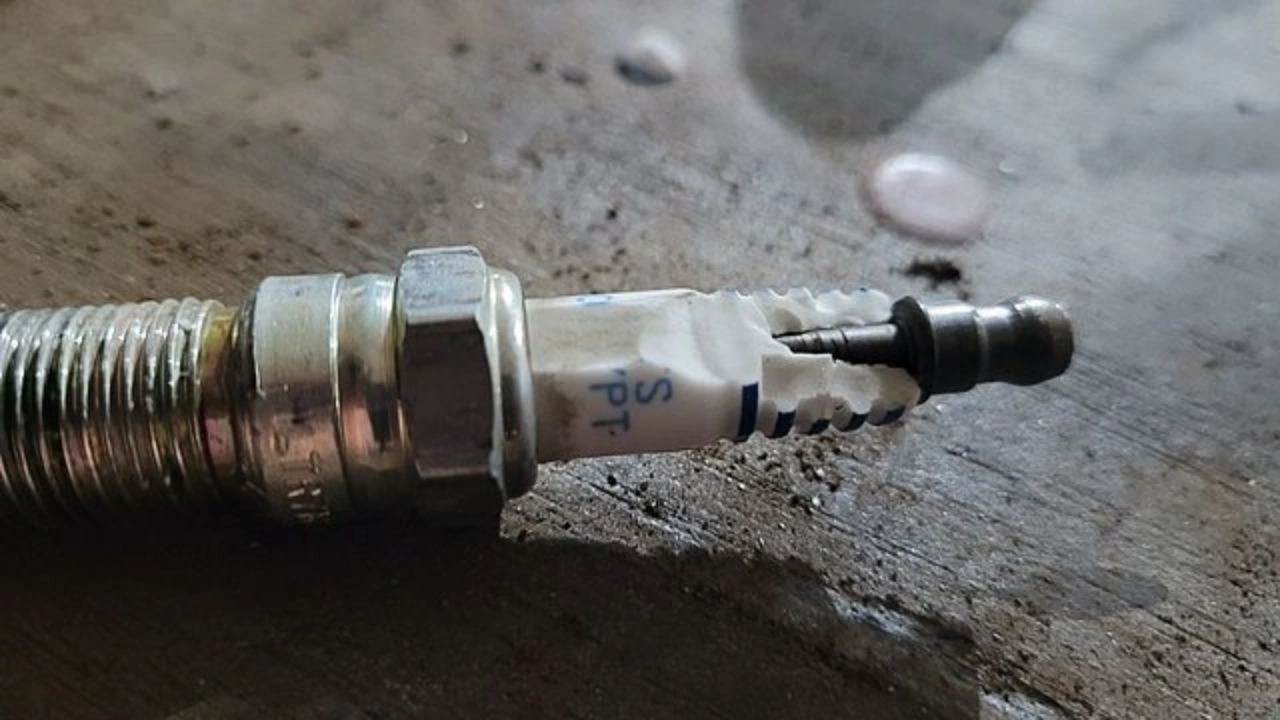
Spark Plug Failure Analysis – Socket Strike/Wrench Hit
Overlooked and ignored, yet one of the most crucial processes to perform correctly. Socket strike is as its name applies and also a formidable way to destroy a brand-new set of expensive spark plugs right out of the box! We see this time and again, so thought it was time to advise the consumer.
#1 What is Socket Strike?
Socket strike occurs when the internal wall of the socket either hits the ceramic insulator (white section) or the terminal cap. This pressure is applied to the terminal post inside the core and can cause the insulator to crack. The damage can then be visible externally, or it can crack at the base. Internal damage can still occur without the insulator actually breaking because any horizontal force that can either bend the terminal post internally can cause damage.
Either way, it’s bad news and can cause a multitude of issues, such as intermittent misfires or even no spark at all. This problem also usually goes unnoticed as it most likely occurs in engines where the spark plugs are difficult to reach (another reason the socket can be angled too much!).
Using the correct socket can make a world of difference in this instance.
#2 Special Spark Plug Sockets are a Wonderful Thing
Someone clever once invented the ‘spark plug socket’, a special device that has the appearance of any normal deep socket, however these are ingenious and either features a rubber grommet inside or a sprung clamp system that holds the spark plug securely in place. The reason for this is quite obvious, it stops the terminal or insulator from striking the socket wall. The other reason is that it means you can pull the spark plug out with the socket once unscrewed, and vice versa.
#3 What Does the Damage Look Like?
Any pressure applied to the terminal post or insulator can result in different types of damage. Most commonly it causes the ceramic shell to completely crack, and these pieces can fall off and even end up inside your engine’s cylinder when removed, not good!
Not to be confused with ‘flashover’, also known as carbon tracking.
Damage to the corrugation section can also, and very easily be mistaken for ‘flashover’. Flashover is another issue that can cause misfires, and sometimes the markings caused by it can be so thin that they almost look like cracks. So it’s a good idea to run your fingernail over the section to feel if it’s indeed a crack or not.
#4 Over Torque on Installation
If the spark plug is over-torqued on installation, then the metal shell which includes the hex can deform so much to the point too much pressure is loaded onto the ceramic insulator. Eventually, it will either crack, or the thread will simply sheer.
#5 What Does the Insulator Do?
-
- Insulates the high voltage that runs through the terminal post inside the plug.
-
- It provides stability to the plug’s center electrode.
-
- The upper portion of the insulator extends the plug above the cylinder head, making it more easily accessible
-
- Extends the electrical path to help prevent flashover. This upper portion may be ribbed (to further prevent flashover).
-
- The bottom portion of the insulator, which supports the center electrode, protrudes into the combustion chamber. Its dimensions take part in controlling the heat range of the plug, or its ability to remove heat picked up during the combustion process.
Though various materials have been used for spark plug insulators through the years, the current contender is aluminium oxide. Most spark plugs now use a 1-piece ceramic insulator made from purified alumina powder. This modern-day insulator provides many benefits over previous designs, including superior insulation or thermal conductivity. It also helps prevent overheating and provides exceptional strength to mechanical and thermal shock.
6# FAQ
If you’re planning on changing your spark plugs then please, please buy one, for your own sanity! They’re not expensive to purchase, but if you have no option but to use a normal deep socket then superior care must be taken to ensure the socket is not slanted and does not slip off the hex. Also we would never recommend using a universal joint socket adapter with a normal deep socket!
Firstly, you must use www.ngkpartfinder.co.uk (opens in new tab) to first confirm which spark plug is correct for your vehicle, then click on the spark plug part number that your vehicle has been linked to. In the specifications, it will display the Hex size of the plug along with other technical data; this is the size of socket that you will need.
Then you can say hello to misfires! Basically, the high voltage running through from the top (terminal cap) can cause the spark to jump (or short) to any nearby earth, whether that’s the cylinder head or another section of the spark plug. It means the voltage won’t reach the center electrode at the bottom and well, you get the gist!
Yes, please see our blog post here
Over-tightening can cause the plug’s metal shell (the hex area which also seals the insulator) to swell, and in turn, puts too much force onto the ceramic insulator or terminal post inside the spark plug. The internals could be damaged which is not visible from the outside.
Under no circumstances should over-torqued spark plugs ever be re-fitted!
A clear sign of over-tightening is when the crushable gasket (if a gasket type plug) is completely flattened. The gasket should not be fully crushed!
#7 Summary
Disclaimer: The content published on this site is mainly original, reprinted, and shared online content. If there is any infringement, please contact email: [email protected], and we will delete it as soon as possible. The opinions of the article do not represent the position of this site, please contact us if you need to deal with it.








